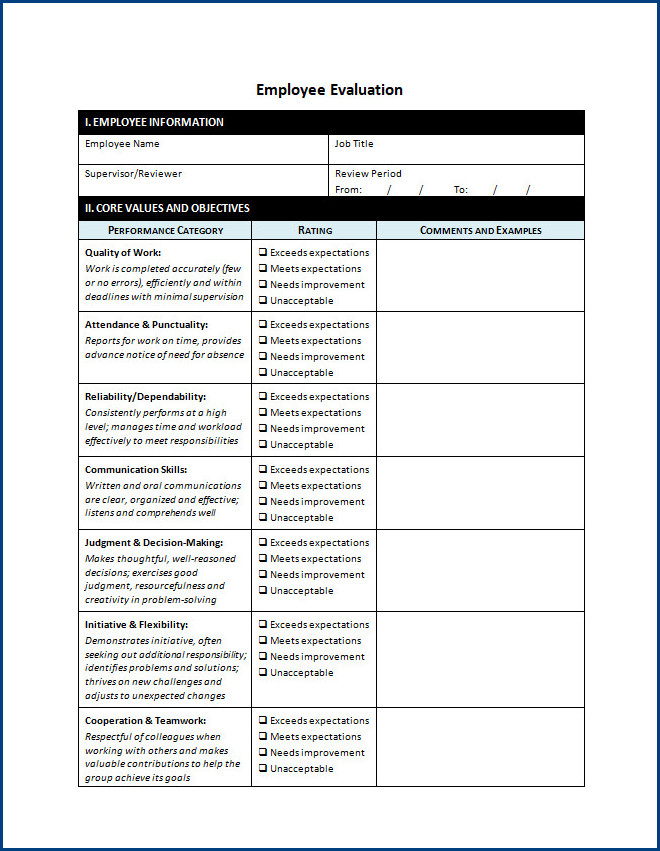How To Evaluate an Employee’s Performance
To effectively evaluate an employee’s performance, there are several key steps to follow:
- Establish clear performance objectives: Before evaluating an employee’s performance, it is important to establish clear and specific performance objectives. These objectives should be aligned with the employee’s job responsibilities and the overall goals of the organization. By setting clear objectives, both the employee and the evaluator have a benchmark to measure performance against.
- Regular feedback and communication: Regular feedback and communication are essential in evaluating an employee’s performance. Managers should provide ongoing feedback, both positive and constructive, to help employees understand their strengths and areas for improvement. This can be done through one-on-one meetings, performance reviews, or informal discussions. Open communication also allows employees to express any challenges they may be facing and seek guidance or support from their managers.
- Use a variety of evaluation methods: Employers should use a variety of evaluation methods to assess an employee’s performance. This can include self-assessments, peer reviews, and supervisor evaluations. Each method provides a different perspective and allows for a more comprehensive evaluation. By using multiple evaluation methods, employers can gather a range of feedback and make a more informed assessment of the employee’s performance.
What are performance evaluations and why are they important?
Performance evaluations, also known as performance appraisals or reviews, are formal assessments conducted by employers to evaluate the job performance of their employees. These evaluations typically involve assessing various aspects of an employee’s work, such as their individual goals, job responsibilities, skills, and overall performance.
The purpose of performance evaluations is to provide feedback and guidance to employees, recognize their achievements, identify areas for improvement, and align their performance with organizational goals.
Performance evaluations are important for several reasons.
- They help employers assess the effectiveness and productivity of their workforce. By evaluating individual performances, employers can identify high-performing employees who can be rewarded or given opportunities for growth, as well as employees who might need additional training or support.
- Performance evaluations provide a platform for open communication between employers and employees. This allows employees to express their concerns, seek clarification, and receive constructive feedback on their performance.
- Performance evaluations can contribute to employee development and motivation. When employees receive feedback on their work, they can better understand their strengths and weaknesses, and use this information to enhance their skills and performance.
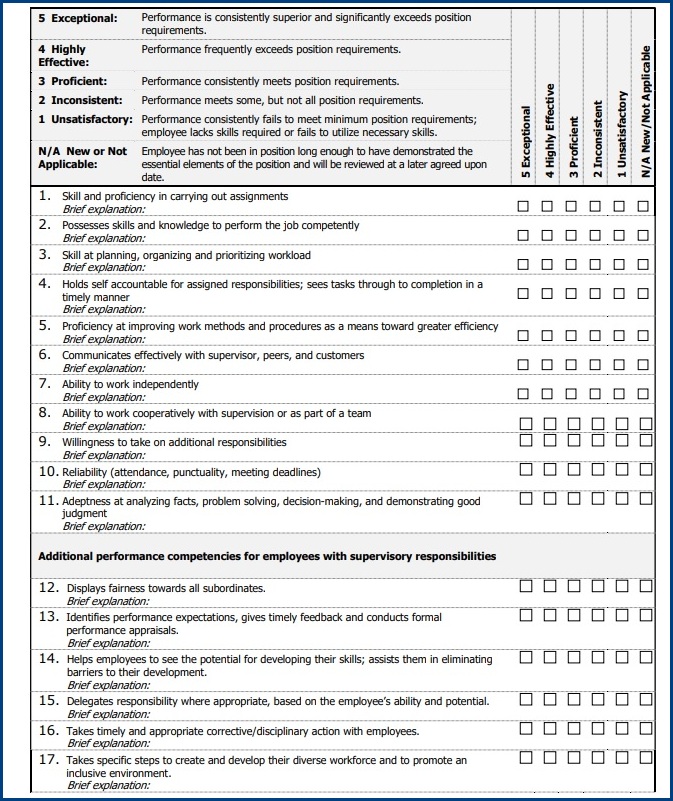
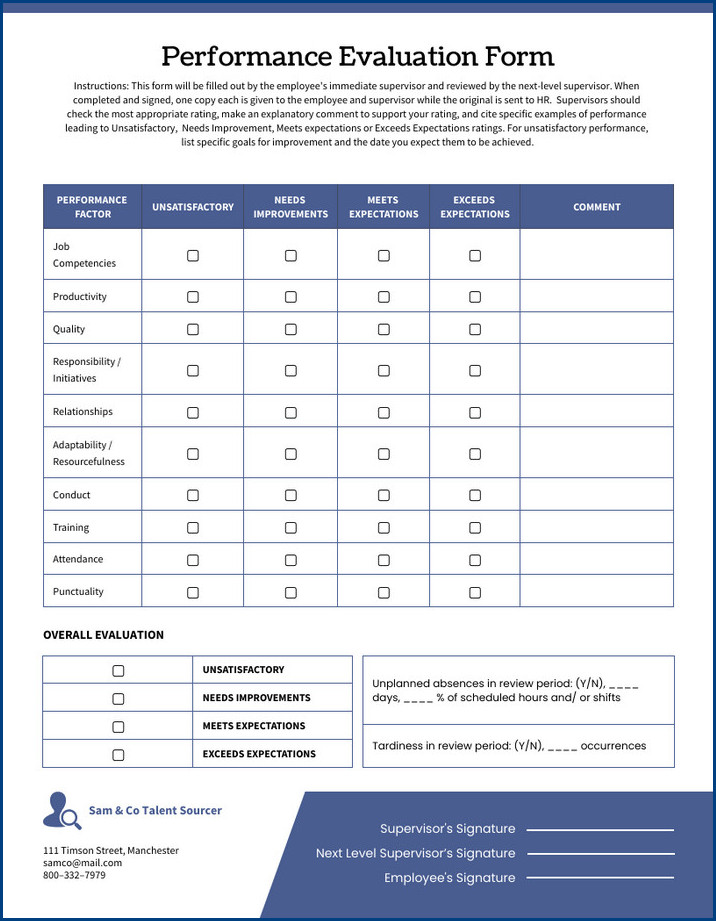
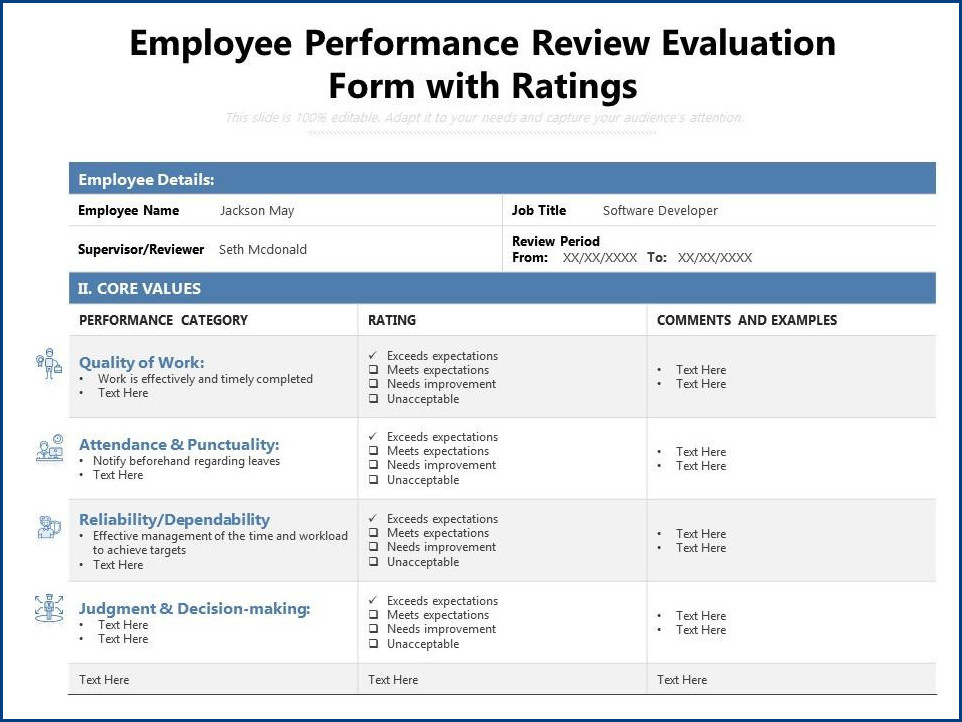
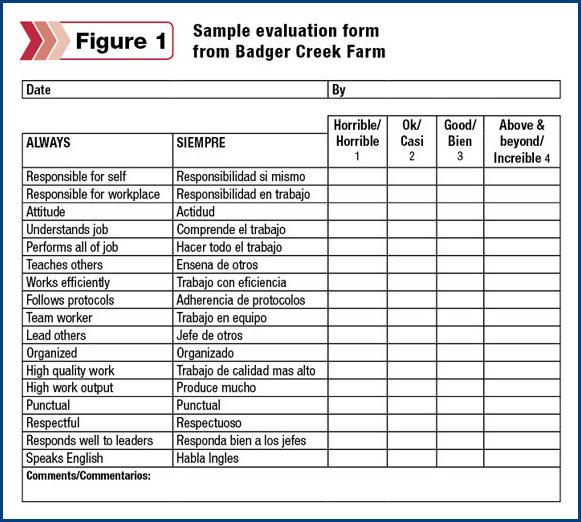
How to Conduct a Great Employee Performance Review
To ensure a successful performance review, consider the following steps:
- Prepare in advance: Before the review, gather all relevant information about the employee’s performance, such as their goals, achievements, and areas for improvement. This will help you provide specific and constructive feedback during the review.
- Create a comfortable environment: Make sure the review takes place in a private and comfortable setting, where both you and the employee can freely discuss their performance without distractions.
- Set clear goals: During the review, set clear and measurable goals for the employee to work towards. These goals should align with the employee’s role and the organization’s objectives.
- Provide constructive feedback: Offer both positive feedback on the employee’s achievements and areas where they can improve. Be specific and provide examples to help the employee understand how they can enhance their performance.
- Listen actively: Give the employee an opportunity to express their thoughts and concerns. Listen actively and show empathy to create a supportive environment.
- Create an action plan: Collaboratively develop an action plan with the employee to address any areas for improvement. Set realistic deadlines and provide the necessary resources to support their growth.
How to Write an Employee Evaluation
To ensure a comprehensive and fair evaluation, consider the following steps:
- Establish clear evaluation criteria: Before starting the evaluation process, it is essential to define the specific criteria that will be used to assess the employee’s performance. This can include factors such as job knowledge, communication skills, teamwork, and productivity. By having clear criteria, managers can provide objective feedback and avoid any biases.
- Gather relevant data: To write a thorough evaluation, it is important to gather information from various sources. This can include reviewing the employee’s work performance, analyzing their accomplishments and achievements, and considering feedback from colleagues and clients. Collecting a range of data ensures a well-rounded evaluation.
- Provide specific examples: When evaluating an employee, it is crucial to back up your statements with specific examples. Instead of making general statements, provide specific instances where the employee excelled or areas where improvement is needed. This not only helps the employee understand their strengths and weaknesses but also adds credibility to the evaluation.
- Offer constructive feedback: An employee evaluation should not be solely focused on pointing out weaknesses. It is important to provide constructive feedback that highlights both the employee’s strengths and areas for improvement. This helps the employee understand how they can grow and develop in their role.
- Set realistic goals: As part of the evaluation process, it is essential to set realistic and achievable goals for the employee. These goals should be specific, measurable, attainable, relevant, and time-bound (SMART goals). By setting clear objectives, employees have a clear direction for their future performance.
Writing an employee evaluation requires careful consideration of various factors to ensure a fair and comprehensive assessment. By following these steps, managers can provide valuable feedback, encourage employee development, and facilitate a positive work environment. Remember, an effective evaluation is a powerful tool for both employee growth and organizational success.
Employee Performance Evaluation Template | Word – Download
